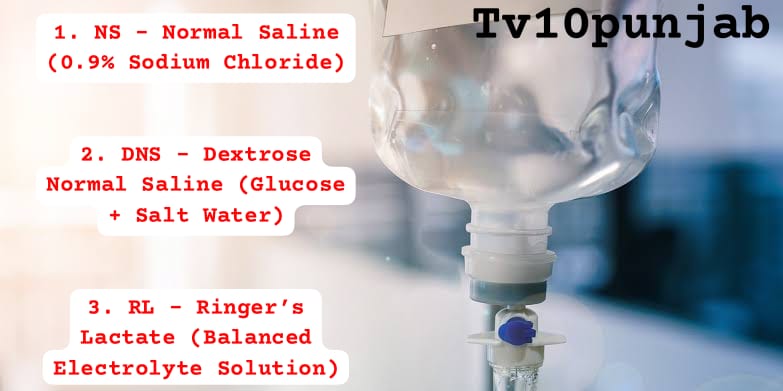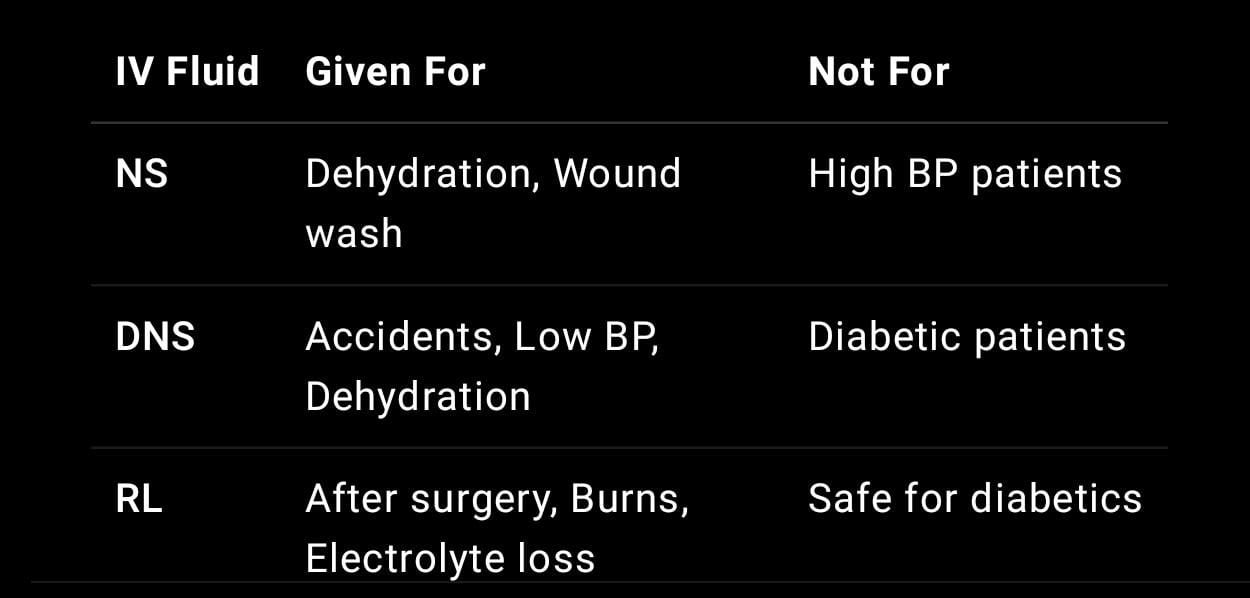Health Desk
Tv10punjab
IV fluids (Intravenous fluids) are liquid solutions that are given directly into a vein to help patients who are dehydrated, injured, or undergoing treatment. They are very useful in hospitals, emergency care, and surgeries.
There are different types of IV fluids. Let’s understand three common ones:
- NS – Normal Saline (0.9% Sodium Chloride)
Use:
When the body has less water (dehydration)
For cleaning wounds
Important Note:
Not suitable for patients with high blood pressure (BP) because it contains salt (sodium), which can increase BP.
Why it’s given:
To quickly rehydrate the body.
To restore salt and water balance.
To flush out wounds or clean infected areas.

- DNS – Dextrose Normal Saline (Glucose + Salt Water)
Use:
In accident cases
When someone has low blood pressure
In cases of dehydration
Important Note:
Not for diabetic patients because it contains dextrose (sugar), which can raise blood sugar levels.
Why it’s given:
To provide both energy (glucose) and hydration.
Helpful when the body needs sugar and salt together.
Often used in emergency situations like fainting or injury.
- RL – Ringer’s Lactate (Balanced Electrolyte Solution)
Use:
After surgery
For burn injuries
When the body has loss of electrolytes
Important Note:
It is safe for diabetic patients, as it doesn’t contain sugar.
Why it’s given:
To replace fluids and minerals lost during surgery or burns.
Contains sodium, potassium, calcium, and lactate, which help maintain the body’s electrolyte balance.
Helps keep the body’s pH in balance.
⚠️ Safety Note:
Always consult a doctor before using any IV fluid.
These fluids should only be given by trained medical professionals.
This information is for education only, not for self-treatment.
Summary Table

Final Tip:
IV fluids can save lives in emergencies, but using the right fluid for the right person is very important. Doctors choose the fluid based on the patient’s condition, blood pressure, sugar level, and overall health.